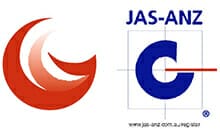What is Forging
The forging process involved applying heat to metal to make it malleable and soft. The material is then shaped with a compressive force, which causes deformation of the metal, while the grain structure of the metal is preserved and shaped to follow the external geometry of the part. By compacting the form in this way, the forging method maintains the metal’s integrity and removes any inherent porosity that may have been present in the raw materials.
Read about: Closed-die forging
What is Casting:
The difference between the metal forging process and the casting process comes down to the method of manipulating the material. Casting is a method of metalworking in which a metal is heated until it is molten. The molten metal is then poured into a mould or vessel, depending on the desired form. The metal is poured into the mould through a hollow tube and cooled.
Why use Castings?
The main advantage of casting is that it allows you to make components that are too large, complicated, or otherwise unsuitable for forging. If you need a heavier end product, the casting process is also a safer option. Casting can be useful to mass-produce parts with internal cavities, parts and components that would be too difficult or costly to forge. Another benefit of casting is if you need custom alloys unsuitable for forging.
Why use Metal Forging?
If you choose the metal forging process, your products will have more strength, durability, a tighter grain structure, and a longer lifespan. These are all desirable features, particularly in fatigue loading conditions, and safety critical items.
However, since the metal has been melted during the casting process, the subsequent grain distribution of the cooled-down product is at random, and this condition makes the casting inferior to forging, when considering the demanding loading conditions which can only be mitigated by possessing the toughness of forgings.
Forging can be useful for:
- Materials that are subjected to heavy loads and stress.
- Parts that must withstand greater mechanical and impact forces.
- High-end applications where the integrity and safety critical properties of the component are more important than time and expense in the manufacturing process.
- Sections in which porosity or weak bonds are unacceptable.
- The manufacturing of mechanically solid parts without the use of costly alloys
Other Things to Consider:
Size:
he overall size of a product is one of the most notable variations between metal castings and forgings. Forging is a method of moving metal when it is still solid and malleable. To change the original shape of the metal, a considerable amount of force is required, and the force required increases dramatically as the section size grows larger. Since castings begin as liquid molten metal, they can flow into nearly any shape or size if a mould is available.
Another factor to consider is the weight of the components. When two identical parts are made, one by casting and the other by forging, the casting is typically lighter than the forging. As a result, weight reduction is common when forgings are replaced with castings. This is due to reduced density of the metal, causing it to be lighter but weaker.
Design:
Part complexity, tolerances, grain structure, and structural integrity are worth considering when designing a component for casting or forging. Forgings may be restricted when determining the complexity of a part. In the forging process, small details and internal cavities can be difficult, if not impossible, to form.
Alternatively, since casting begins as a liquid, it has a distinct benefit for complex shapes because it can quickly flow into tiny, detailed areas. This also means the original casting needs less machining after casting.
Changing a small detail in a component’s casting pattern is much simpler than changing a forging die, which might make castings more cost and time effective during the design and prototype process of product development.
Alloy:
The availability of alloys is a significant difference between castings and forgings. Forging components are made from billets at a steel mill. These mills usually only have a small range of grades and alloy allowances.
Castings, on the other hand, are melted and poured at the foundry, removing this step and lowering alloy prices. In this way, casting can often be a cheaper alternative to forging.
Strength:
One of the most essential components to think about is the internal structure and strength of the final product. The forging process manipulates the original grain structure and can move it in a specific direction, resulting in a component that is directionally superior.
Forged components will maintain their shape longer if the application requires a uniformly vital component.
Cost:
For medium to large lot sizes, forgings are the most cost-effective option; however, castings have lower raw material costs than forgings.
Since the cost of metal castings and forgings are based on different factors, it’s important to talk to the experts. They can help you choose whether the cost-effective method of casting or the more sustainable long-term durability of forging is suitable for you.
Also, read about: Forging Inspection & Testing Service
Forging is stronger than casting.
Forging, in general, imparts better mechanical properties and ductility than all other metallurgical processes. In most cases, forgings possess higher impact properties, and thus have superior toughness, than castings. The grain flow is uniform, and the grain size is finer. Porosity, shrinkage, cavities, and cold pour problems are normally avoided when using forgings. Grain flow, coupled with appropriate heat treatment can provide greater wear resistance. Forgings can also be more cost-effective in the long run than other processes.
At Greg Sewell Forgings, strength, durability, and quality are our highest priorities. The Forging process offers a safer and sturdier final product for our partners, which is the key reason we recommend it. By forging, we can ensure our customers a product with higher tensile and yield strength, higher fatigue strength, and an increase in the overall durability of the product.
For advice, recommendations or quotes for anything industrial forging, get in touch with the expert team at Greg Sewell Forgings today. Please reach us on +61 3 8301 1500 or at sales@gsforgings.com.





